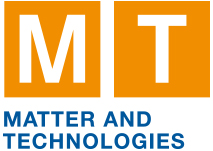Speaker
Description
Using the Timepix4 readout chip developed by the Medipix4 collaboration, we are developing TEMPUS (Timepix4-based Edgeless Multi-Purpose Sensor) as a next-generation detector for time-resolved measurements at the PETRA-III synchrotron and the planned PETRA-IV upgrade. The Timepix4 chip operates in two readout modes: a framing mode that improves on the Medipix3 chip capabilities, and a timestamping mode that improves on the Timepix3 chip performance. With 512 × 448 pixels at a 55 μm pitch, TEMPUS offers a larger sensitive area, a 10× higher count rate in photon-counting mode, and frame rates of up to 40 kHz.
The development of the TEMPUS detector focuses on the event-driven mode, where precise timing can be achieved at high rates. Timing resolution of a few nanoseconds has been demonstrated for TEMPUS versions with silicon p-on-n sensors of 300 μm and 500 μm thickness, while first tests with CdTe sensors enabled direct comparison of material-dependent timing and energy performance. The stability of the 16 GWT links—delivering over 80 Gbps aggregate bandwidth—has been significantly improved, enabling continuous high-rate operation. On the data analysis side, new clustering algorithms and an energy calibration pipeline have been introduced, enhancing both spatial resolution and quantitative energy response.
The TEMPUS detector has participated in beamtimes at PETRA III, ESRF, and Eu.XFEL. Applications under study include nuclear resonant scattering (NRS), X-ray photon correlation spectroscopy (XPCS), and experiments in parametric down-conversion. These initial results establish TEMPUS as a versatile detector platform capable of combining high-rate photon counting with nanosecond time resolution.

